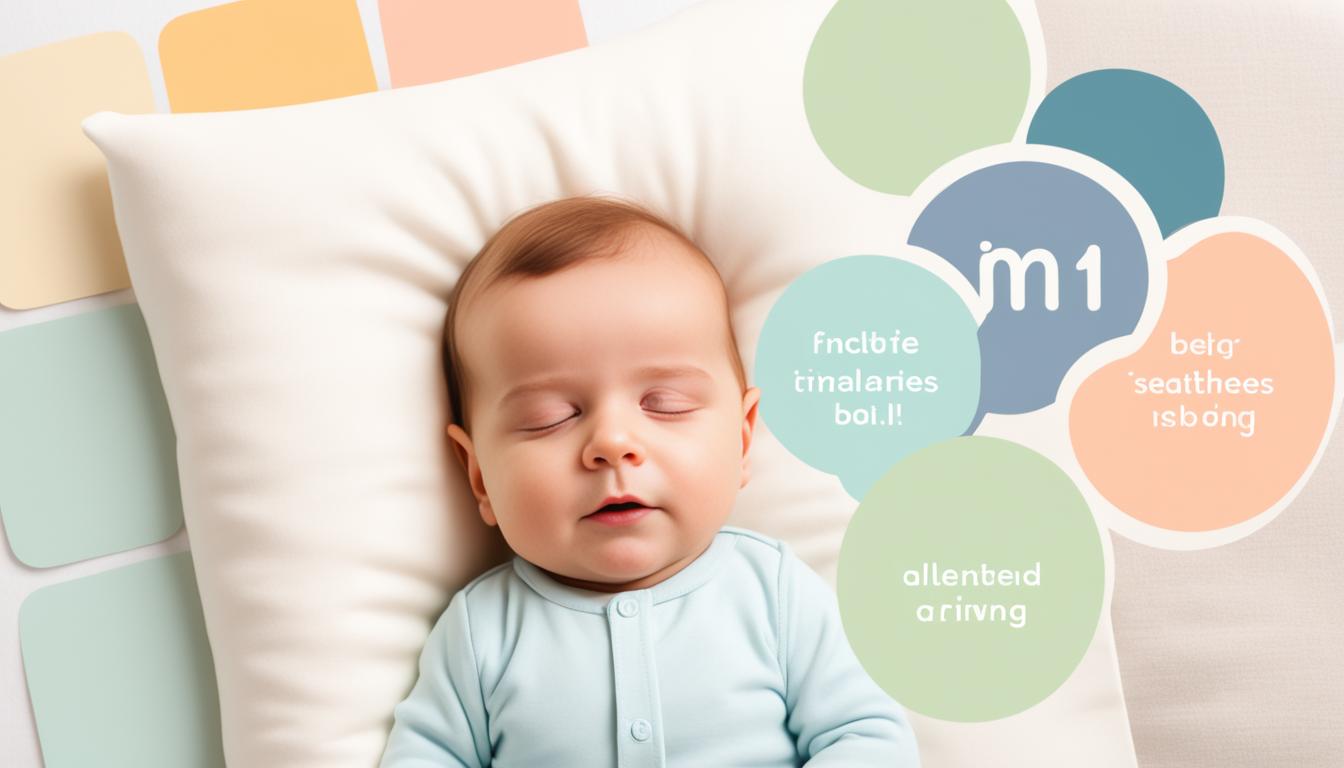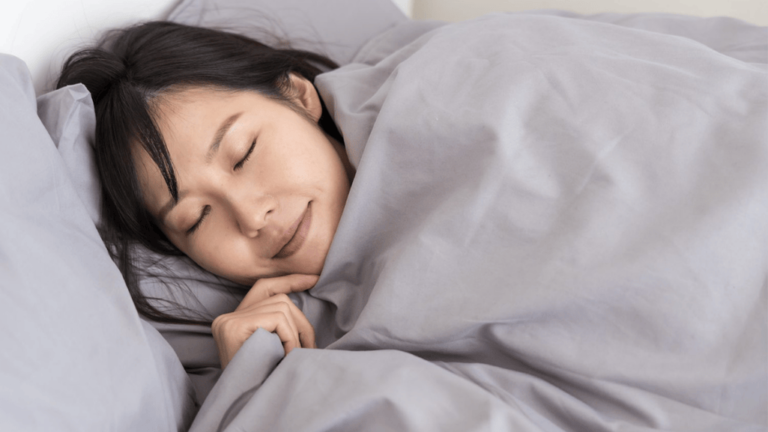New parents often wonder when can infants use pillows. It’s crucial to know the safe age guidelines for putting a pillow in a baby’s bed. The American Academy of Pediatrics says babies need to sleep on a hard and flat surface. This rule is important until they are one year old.
Putting a pillow in a baby’s bed shouldn’t happen until they move to a toddler bed. This can be anywhere from 18 months to 3 1/2 years old. Waiting to give a pillow can lower the risk of serious problems. It makes sleeping safer for babies.
Key Takeaways
- Infants should sleep without pillows to adhere to safe sleep guidelines.
- The American Academy of Pediatrics advises against soft bedding for babies under one year old.
- The best age for introducing a pillow is when a child moves to a toddler bed.
- Delaying the use of a pillow helps minimize the risk of suffocation.
- The development of the child’s neck and spine also factors into pillow introduction.
- Creating a safe sleep environment is paramount for infant health and development.
The Risks Associated with Infant Pillow Use
It’s very important to know the risks that come with using pillows for babies. Pillows can be dangerous for infants, although adults find them comfortable. They increase the chance of suffocation and overheating.
Suffocation Hazards and Sudden Infant Death Syndrome (SIDS)
The main risks involve suffocation and a higher chance of Sudden Infant Death Syndrome (SIDS). Babies are not able to move away from pillows that block their breathing. This can lead to very serious problems.
- Babies might move in their sleep, getting too close to a pillow. This reduces their air and is dangerous.
- Soft bedding might seem safe but can raise the risk of SIDS. It does this by making it hard for babies to stay at a good temperature.
Overheating Risks with Soft Bedding
Overheating is another big risk from soft bedding. Some materials keep babies too warm, making them uncomfortable. This warmth can also raise the chance of SIDS.
- Keep baby’s sleeping area clear of extra items to lower overheating risks.
- Check the room’s temperature often. It should be just right for your baby.
Because of these dangers, it’s key to always follow safe sleep rules. This keeps babies safe from hazards that come with bad sleeping setups.
Deciphering the Right Time: When Can Infants Use Pillows
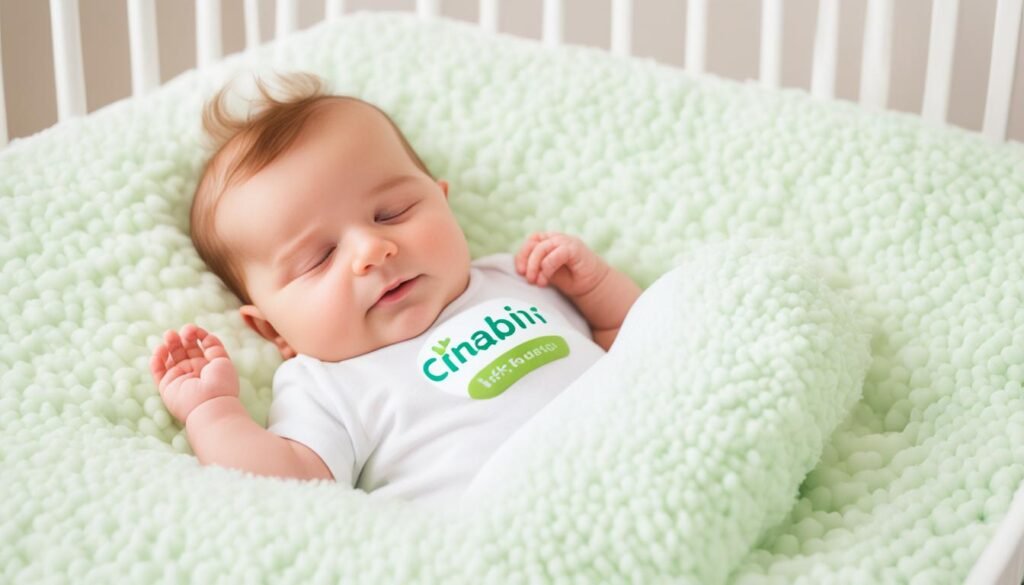
As parents, we often ask when can infants use pillows. Deciding when to add a pillow to your baby’s bed needs care. This is because every infant grows differently. There’s no single best age for baby to use a pillow.
Experts say the safe age for baby to use a pillow is when they move to a toddler bed. This is usually between 18 months to 3 1/2 years. Waiting until then helps avoid the danger of suffocation. It also matches the time when their neck and spine are ready for more support.
- Look for signs of readiness, such as the child seeking extra head support
- Ensure the toddler bed transition has occurred to minimize risks
- Consider the size and firmness of the pillow for adequate support
Following these guidelines on when can infants use pillows helps avoid risks. It ensures your baby can safely enjoy a pillow when the time is right.
Establishing a Safe Sleep Environment for Infants
For new parents, making a safe sleep environment for infants is crucial. Guidelines backed by research offer steps to lessen sleep risks. These steps ease worries and help your baby’s overall health.
Importance of a Bare Sleeping Area
A clean sleeping space is key for your infant’s safety. The American Academy of Pediatrics (AAP) highlights the need for a clutter-free area. No pillows, quilts, toys, or bumper pads should be in the crib. A simple fitted sheet on a firm mattress is where safety begins.
Appropriate Sleepwear and Room Temperature
Choosing the right sleepwear for your child is crucial. It’s important to pick appropriate sleepwear that keeps your baby comfy without overheating. One-piece sleepers or wearable blankets are top choices.
It’s also vital to keep the room temperature between 68°F and 72°F. This ensures your infant stays safe and cozy all night.
- Fitted sheet on a firm mattress
- Avoid the use of loose bedding and soft objects
- One-piece sleepers or wearable blankets recommended
- Keep room temperature between 68°F – 72°F.
By using these tips at bedtime, you create a safe, peaceful space for your baby.
Understanding Infant Sleep Safety Tips
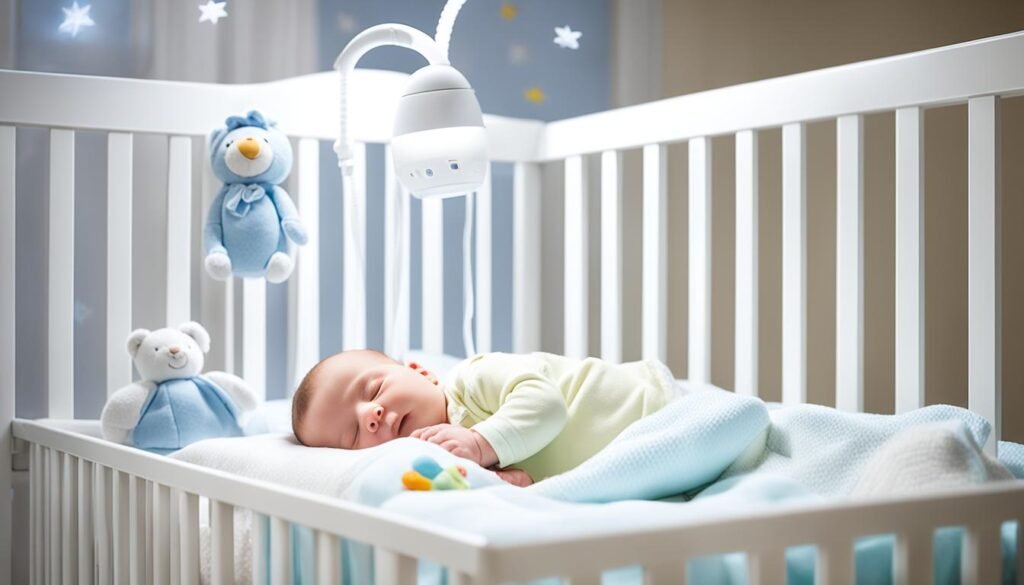
Keeping infants safe during sleep is very important. Following advice from the American Academy of Pediatrics helps reduce risks. It creates a safe sleep environment. Knowing the do’s and don’ts of infant sleep helps babies sleep well and stay safe.
Recommendations from the American Academy of Pediatrics
The American Academy of Pediatrics offers key infant sleep safety tips. These include putting babies on their backs to sleep, using a firm mattress with a snug sheet, and keeping the sleep space clear of soft items, toys, and loose bedding. These steps help prevent Sudden Infant Death Syndrome (SIDS) and suffocation.
Do’s and Don’ts of Infant Sleep
- Do: Lay your infant on their back on a firm sleep surface.
- Do: Opt for breastfeeding if possible, as it has been associated with a reduced risk of SIDS.
- Do: Consider offering a pacifier at nap time and bedtime, which can provide a protective effect against SIDS.
- Do: Keep the sleep environment at a comfortable temperature to prevent overheating.
- Don’t: Let infants sleep on soft surfaces like sofas, armchairs, or soft mattresses.
- Don’t: Share a bed with an infant, which raises the risk of SIDS in the first six months.
- Don’t: Use bedding that might cover an infant’s head, raising suffocation risks.
- Don’t: Expose the infant to tobacco smoke, a big risk for SIDS.
Why Flat Sleeping Surfaces Are Recommended for Babies
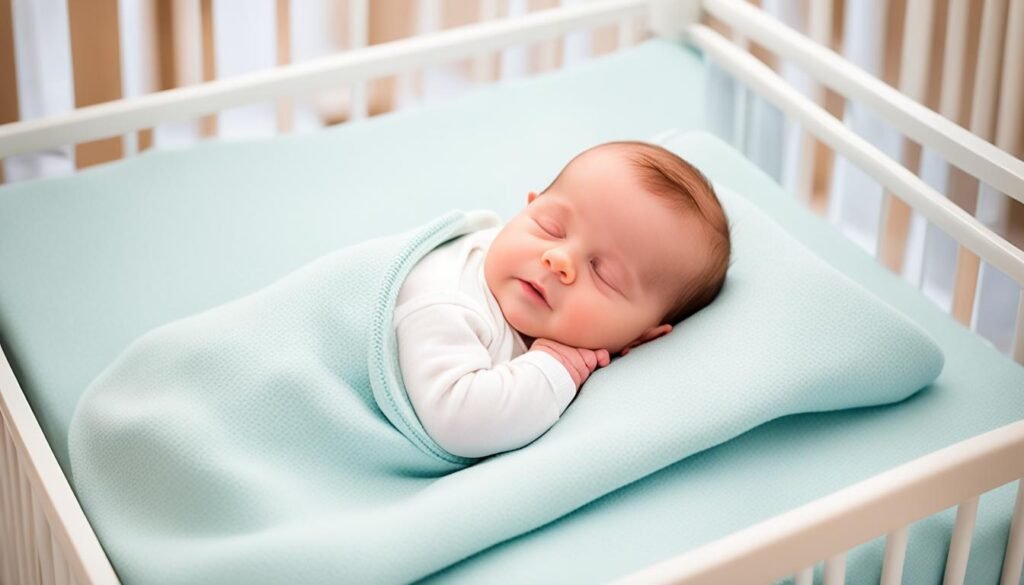
It’s really important to know why flat sleeping surfaces are best for infants. These surfaces help create a safe sleep environment for babies. They reduce the risks in the early stages of a baby’s life. A flat, firm mattress offers a stable and safe spot for sleeping babies who can’t move much by themselves. This simple design helps keep babies safe while they sleep. It also lowers the risk of Sudden Infant Death Syndrome (SIDS).
Choosing a flat surface over a soft one is backed by solid research. It points out the dangers like suffocation and breathing problems if a baby rolls onto something uneven. A level surface keeps the air around a baby’s face flowing freely. This way, nothing blocks their breathing. Also, a flat surface is good for the proper growth of a baby’s spine and neck. This is very important in the first stages of their life.
- Maintains clear and unobstructed airflow.
- Prevents potential suffocation risks.
- Facilitates proper spinal and neck alignment.
- Forms a part of the guidelines for reducing SIDS risks.
Talking about the good things of flat sleeping surfaces adds to the effort to ensure safe sleep environments for babies. Caregivers and parents can trust that picking the right sleep setup supports a baby’s health for life.
Transition to Toddlerhood: Introducing a Pillow
Moving your child to toddlerhood is big. Introducing a pillow is one step in this big change. It marks a special milestone like moving to a big kid bed or learning to use a spoon. But, it’s important to choose the right time and ensure safety. Parents who watch closely might see signs your toddler may be ready for a pillow. Usually, this happens when they start looking for something to rest their head on during quiet times.
Signs Your Toddler May Be Ready for a Pillow
Knowing when your toddler is ready for a pillow is easy if you know what to look for. They might start using blankets or stuffed animals to get comfy. This adaptation is key for a hassle-free move to toddlerhood. Let’s talk about the clear signs your toddler may be ready for a pillow:
- They look for soft places to nap or sleep at night.
- They prefer lying on a pillow, maybe on your bed or the couch.
- They may show they want more support for their head, maybe by making their own rest spots.
Selecting the Proper Pillow for Your Toddler
Once you see your child is ready for a pillow, it’s time to find the right one. There are many options out there. The best pillow provides support and keeps them safe. Below are some tips for picking the perfect pillow:
- Choose a toddler-sized pillow that is flat and firm. This helps with safe sleep and keeping their spine straight.
- Make sure the pillow material is safe for allergies and soft for their skin.
- Look for the right certification to be sure the pillow is safe for toddlers.
Following these tips will make bedtime better for your child. It helps your child smoothly move into toddlerhood.
Proper Pillow Types for Infant to Toddler Transition
As kids grow, their sleep needs change, leading to a big shift in their bedding. Picking the right pillow is key in this changeover. What was once unsafe for an infant can now be suitable for a toddler. Parents often worry about choosing between comfort and safety in proper pillow types for infants. It’s crucial to know the difference between firm vs. soft pillows.
Firm vs. Soft Pillows: Which Is Safer?
The choice between firm and soft pillows is key to finding safer pillow options for toddlers. Firm pillows are usually the go-to because they offer needed support without posing a risk of suffocation. Soft pillows, though cozier, might fit too snugly around a toddler’s face, raising the chance of suffocation. So, opting for a firmer pillow is more about safety than just preference.
Considerations for Hypoallergenic Materials
When picking a pillow, the material is as important as how firm it is. It’s best to choose hypoallergenic materials since they’re less likely to cause allergies. Toddlers’ immune systems are still growing, making them more prone to irritants. Using hypoallergenic materials for pillows helps protect your child from discomfort or health concerns.
- Firm pillows support toddler’s neck and spine growth.
- Soft pillows may pose a risk of suffocation and are not recommended.
- Hypoallergenic materials could prevent allergic reactions and promote better sleep hygiene.
In sum, moving from infant to toddler sleeping setups needs careful selection of bedding. Ensuring safety with a firm pillow and opting for hypoallergenic materials are key. These steps are vital in making sure toddlers sleep soundly and safely.
Pillow Safety Beyond the Crib: Ensuring Ongoing Safety
Keeping toddler pillow safety in mind is vital as kids grow and move around more. Once a child moves out of the crib, pillow safety becomes even more important. Parents need to adopt ongoing pillow safety measures for their child’s changing surroundings. This includes when a child starts sleeping in a toddler bed or uses a nap mat.
As toddlers get more mobile, they become curious. They might use pillows for things other than sleeping. It’s important to check any pillows a toddler can reach. Look for signs of wear and tear that could make the pillow unsafe.
- Conduct a routine check for loose threads or torn fabric which could pose a choking hazard.
- Ensure the pillow filling remains evenly distributed to avoid creating soft spots that could result in poor head support.
- Replace pillows at the first sign of degradation to maintain a safe and supportive sleep environment.
Teaching ongoing pillow safety measures is also about educating those who care for your child. This means talking to caregivers and older siblings about how to use pillows safely. It’s crucial that they supervise the child during nap time.
- Verify that the pillow size corresponds appropriately to the toddler’s head size, preventing awkward elevation or neck strain.
- Opt for a firm pillow that holds its shape while providing adequate support.
- Consider the material composition of the pillow, preferring hypoallergenic and breathable fabrics.
Pillow safety beyond the crib means keeping our children safe and comfortable as they grow. By teaching parents how to ensure toddler pillow safety, we create better places for our kids to sleep and grow.
Conclusion
Moving from being a baby to a toddler is very important for infant pillow safety guidelines. It’s the start of keeping a child safe, which we must take seriously. Following expert advice and keeping the sleep area clean without pillows and soft beds is key to avoiding dangers.
When kids grow to need a toddler bed, parents must make smart choices about pillows. It’s crucial to pick the right pillow for them, focusing on firmness and if it’s hypoallergenic. This ensures the child’s needs are met safely and comfortably.
Even after leaving the crib, staying watchful is essential. Keeping up with safety, changing the sleeping area, and watching as they grow helps maintain a safe and loving space. This care supports kids as they go through more stages of growth.

